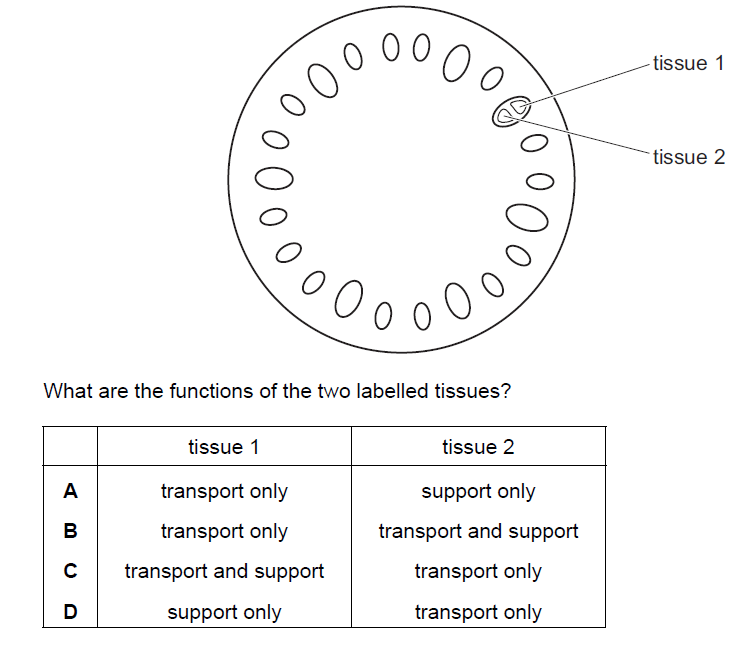Question
The diagram shows a cross-section through a plant stem.

▶️Answer/Explanation
B
In a cross-section of a plant stem, there are typically three main types of tissues: the vascular tissue, the ground tissue, and the dermal tissue.
The vascular tissue consists of two types of tissues: xylem and phloem.
1. Tissue 1 (Xylem, vascular tissue): The primary function of xylem is transport. It is responsible for transporting water, minerals, and nutrients from the roots to the rest of the plant. Xylem tissue is composed of specialized cells called tracheids and vessel elements that form long tubes. These tubes allow for the upward movement of water and dissolved substances through the stem.
2. Tissue 2 (phloem, vascular tissue ): Phloem: The primary function of phloem is transport and support. It is involved in the movement of organic compounds such as sugars, amino acids, and hormones throughout the plant. Phloem tissue is made up of sieve tube elements and companion cells. Sieve tube elements form tubes that facilitate the movement of sap, while companion cells provide metabolic support to sieve tube elements.
